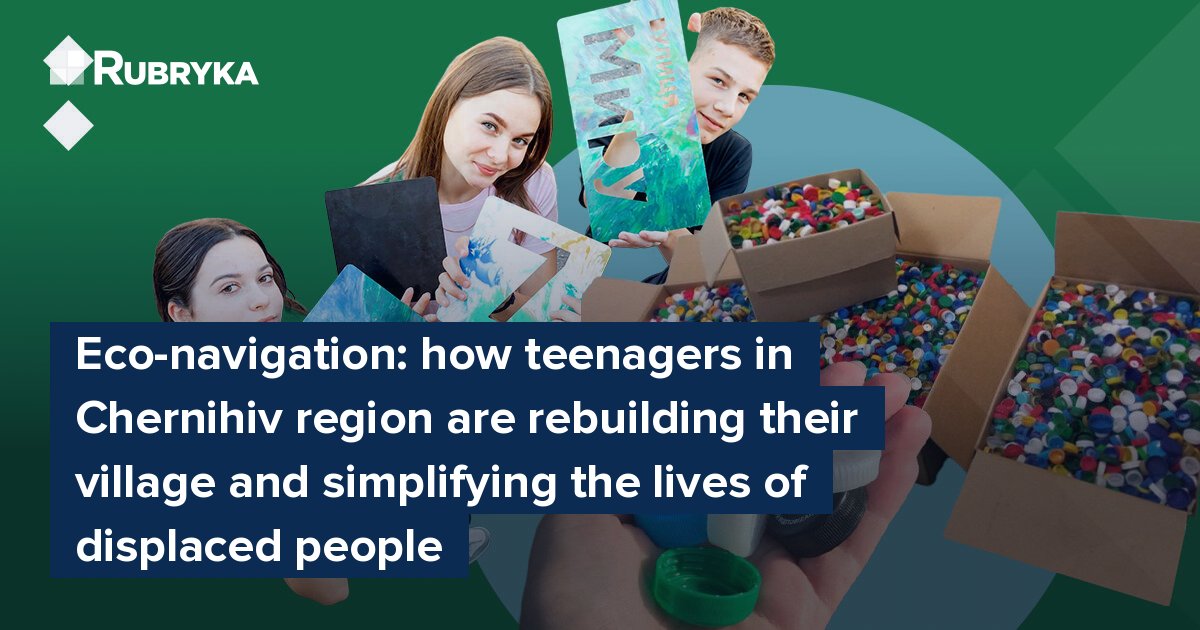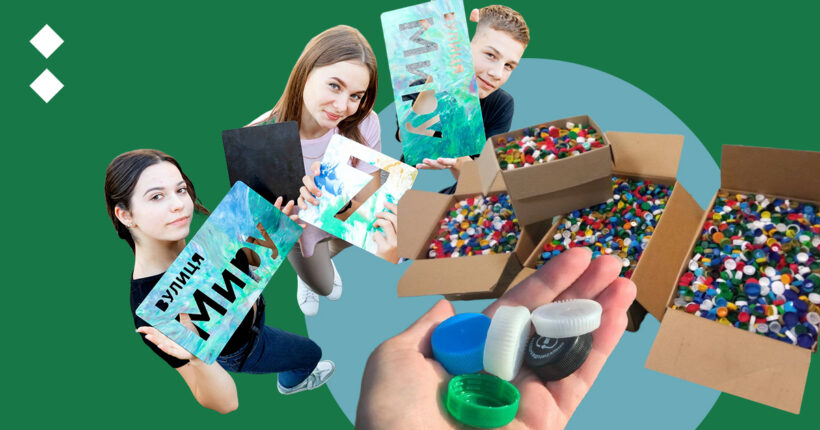
What is the problem?
Little things can have a considerable impact, and reconstructing Ukraine doesn't always require millions.
In spring 2022, all signs were taken down in the Kulykivka community in the Chernihiv region. This was done to hinder the enemy's advancement. Although the region of Chernihiv has since been liberated, the streets of Kulykivka still lack any signposts. This poses a significant inconvenience for the numerous internally displaced persons (IDPs) residing in the village.
What is the solution?
The students at Kulykivka Lyceum decided to provide an easy and efficient way for villagers to navigate their community and reach various vital institutions such as schools, hospitals, and the administrative services center. They devised a socially significant and eco-friendly project called "Enhancing Navigation in the Village of Kulykivka." In this way, they are contributing to the restoration of Ukraine.
"Yes, there is a war in our country, but we cannot simply stand by and do nothing. That's not how life goes on; we must work towards rebuilding everything gradually. One way to do that is by starting in our communities. It's important to develop strong communities, not just for ourselves, but also for our soldiers so they have a place to return to," shares Victoria Bushko, a 10th-grade student at Kulykivka Lyceum and participant in the project.
The educational program "Plan. DIY" focuses on reconstruction and involves teenagers in rebuilding Ukraine. This program aids youth in realizing their own project ideas. Rubryka has previously featured an article on this program.
How does it work?
Three problems – one solution
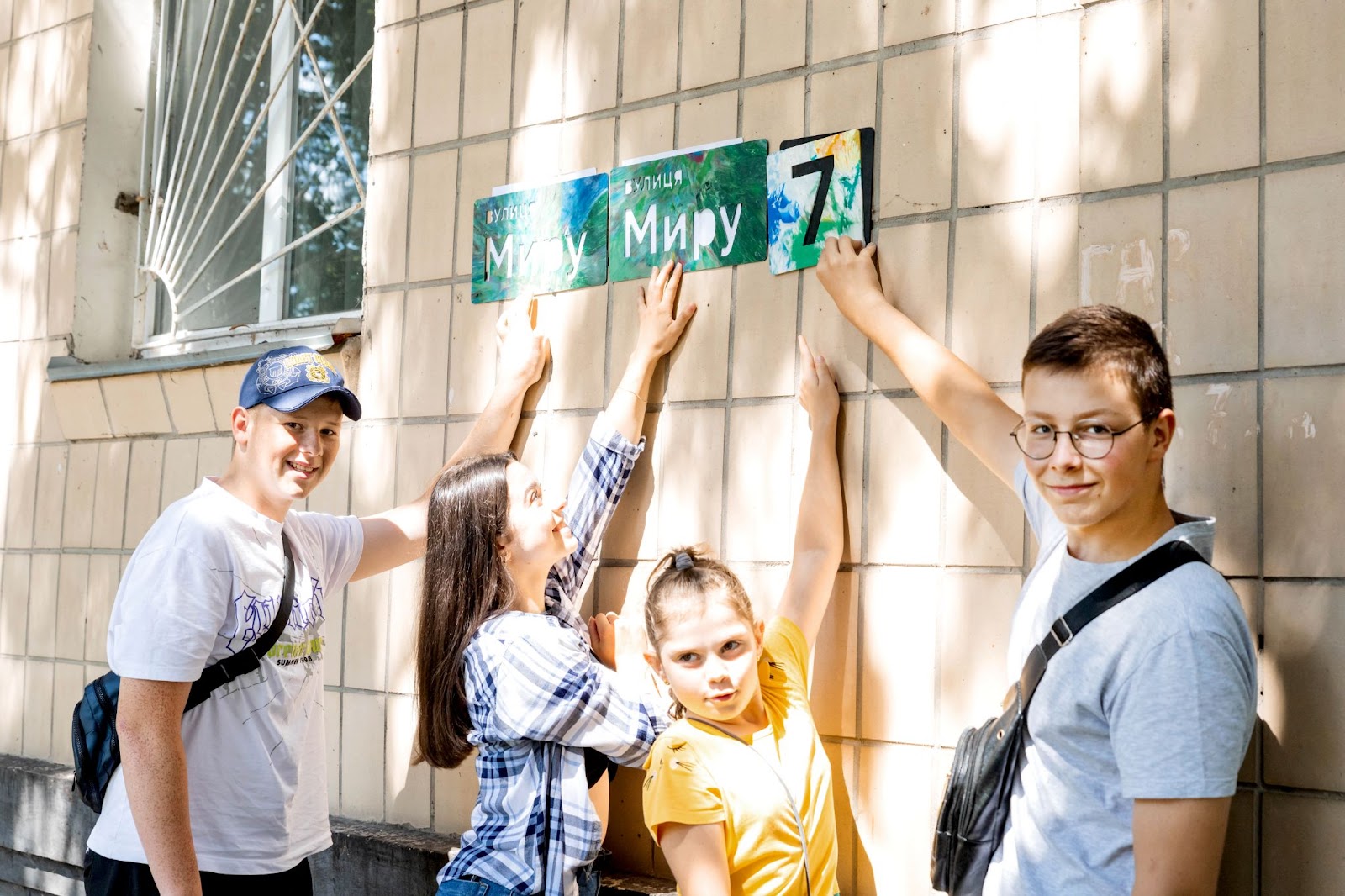
The schoolchildren's ecological project aims to improve navigation in the Kulykivka community and support the growth of the local tourism industry.
The boys and girls had a mission not only to hang up the old signs that the community members had taken down at the start of the Russian invasion but also to revamp the entire navigation system. They aimed to make it not just convenient but also original, bright, and attractive.
"We've been considering a modern and user-friendly navigation system for quite some time. By February 24, 2022, the community, along with the tourist club, which frequently organizes bike trips to nearby villages, had developed five tourist routes that were popular among people. However, due to their proximity to the line of demarcation and potential danger from fire, those villages have now been removed from the routes to ensure the safety of our community's guests. With the help of signs, all tourists, residents looking to discover scenic spots, and even new community members will be able to navigate more effectively and avoid getting lost," stated the lyceum students during their project presentation.
Aside from revamping the signs, the students also took on another pivotal objective: to minimize plastic waste pollution in the area. To achieve this, they drew inspiration from a pre-war project carried out by Kherson's schoolchildren and initiated a collection of plastic bottle caps to fashion new street signs for the community.
To ensure the validity of their idea, the high school students conducted a survey among the villagers. A total of 130 members of the Kulykivka community participated in answering the questions posed by the proactive students. The results revealed that:
– 54.6% of respondents do not know the names of community settlements or streets in villages and Kulykivka itself;
– 67.7% believe that the lack of signs contributes to poor orientation in the area;
– Only 15% of residents rely on Google Maps for directions;
– 86.2% are willing to participate in the collection of plastic caps, which schoolchildren will use to create signs.
The local government and teachers rallied behind the students of Kulykivka Lyceum, with Yaryna Dymytryshyn, a Ukrainian language and literature teacher, and her colleague Alla Salo, a design and technology teacher, taking on the role of project supervisors.
Plan, learn, act!
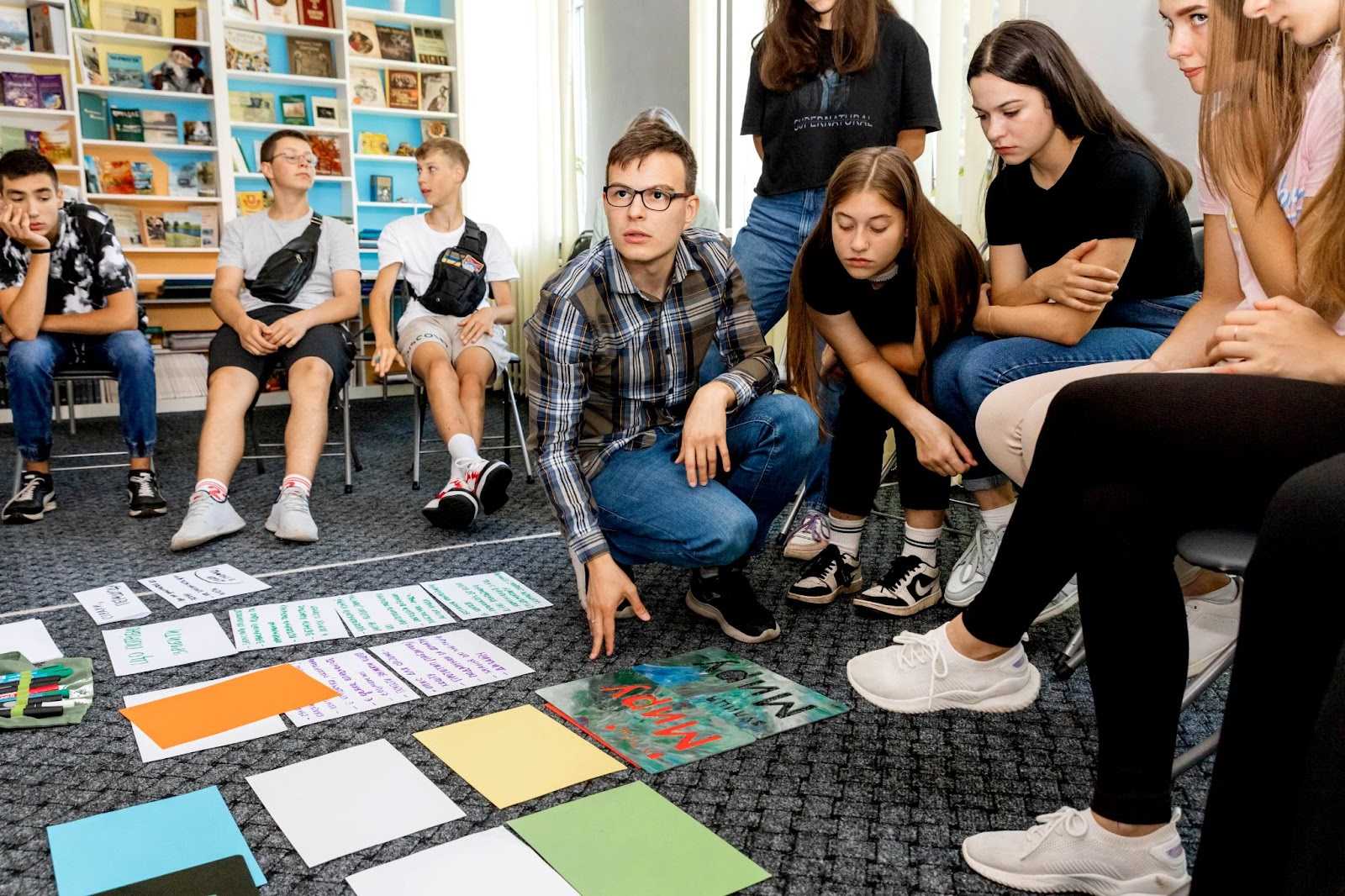
A workshop in Kulykivka as a part of the "Plan. DIY" program.
In 2023, the "Plan. DIY" educational program for teenagers introduced a contest for student projects focused on enhancing communities. Rubryka has covered this program before. It aims to fulfill young people's desire to participate in their country's reconstruction, equipping them with the necessary knowledge and skills.
The lyceum in Kulykivka submitted their project to the program and was chosen as one of the winners. As part of the program, they received assistance from Oleksandr Kolodko, the designer and co-founder of "Ahent Zmin," who helped create an appealing and user-friendly navigation system for the village. Kolodko, who has previously designed navigation for the Kyiv metro, Lviv Square, and bicycle routes on Trukhaniv Island, used his expertise to make the system convenient for residents and visitors.
A group of teenagers came to the designer with a clear vision and a determination to create navigation from recycled plastic. However, they lacked the expertise to achieve it most effectively. That's when Oleksandr Kolodko stepped in as a mentor, leading them on an exciting journey through the world of navigation. He explained the typical process, stages, and objectives of creating such a project.
What exactly is navigation, and what is its purpose?
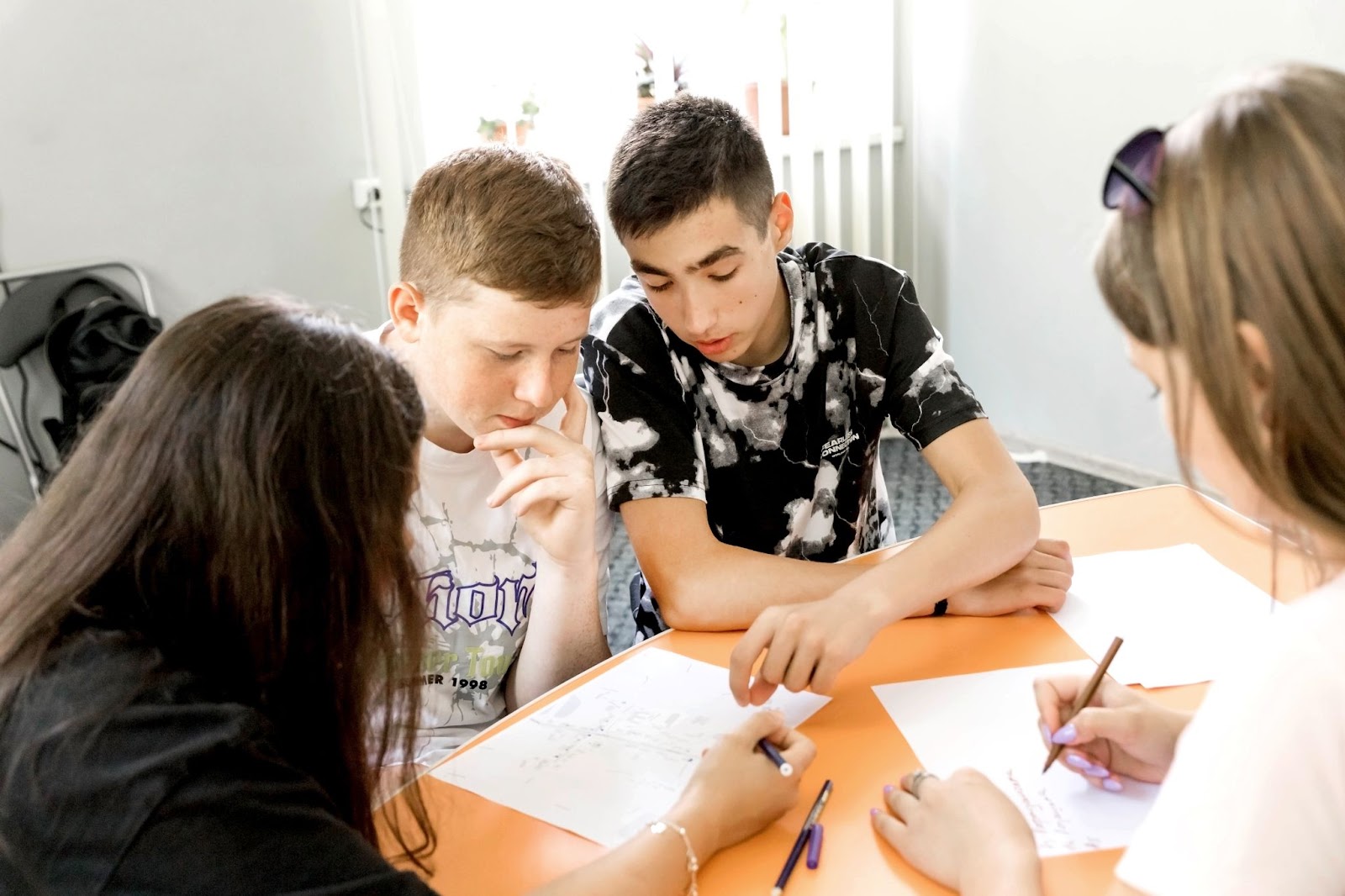
The students from Kulykivka Lyceum are currently working on navigating their home village.
"Navigation comprises a systematic approach to reaching your intended destination," Oleksandr Kolodko explains. "Solutions should help you understand where you are, how everything is arranged around you, and how to build a route. At decision-making points, to understand where to move next, to be sure of the route and the place you have reached."
The expert also mentions that it is a common viewpoint to question the necessity of navigation systems when smartphones already have Google Maps. However:
- the phone may discharge, or the connection may drop out;
- maps are not updated often, and updates reach villages even later;
- even if you have a map, it's important to compare your surroundings and confirm that the street and house are nearby. Furthermore, in reality, it's easier for people to navigate by looking around them instead of relying on a smartphone screen.
"Villages and cities differ only in size and navigation options. However, the process remains similar: it involves identifying the target audience, understanding their information requirements, and devising strategies to fulfill those needs. Essentially, navigation is essential for locating streets and buildings accurately. Then, it becomes crucial to highlight significant landmarks catering to the majority's needs. For instance, in Kulykivka, these landmarks may include a stadium and a hospital that can be accessed from the main street," Oleksandr Kolodko notes.
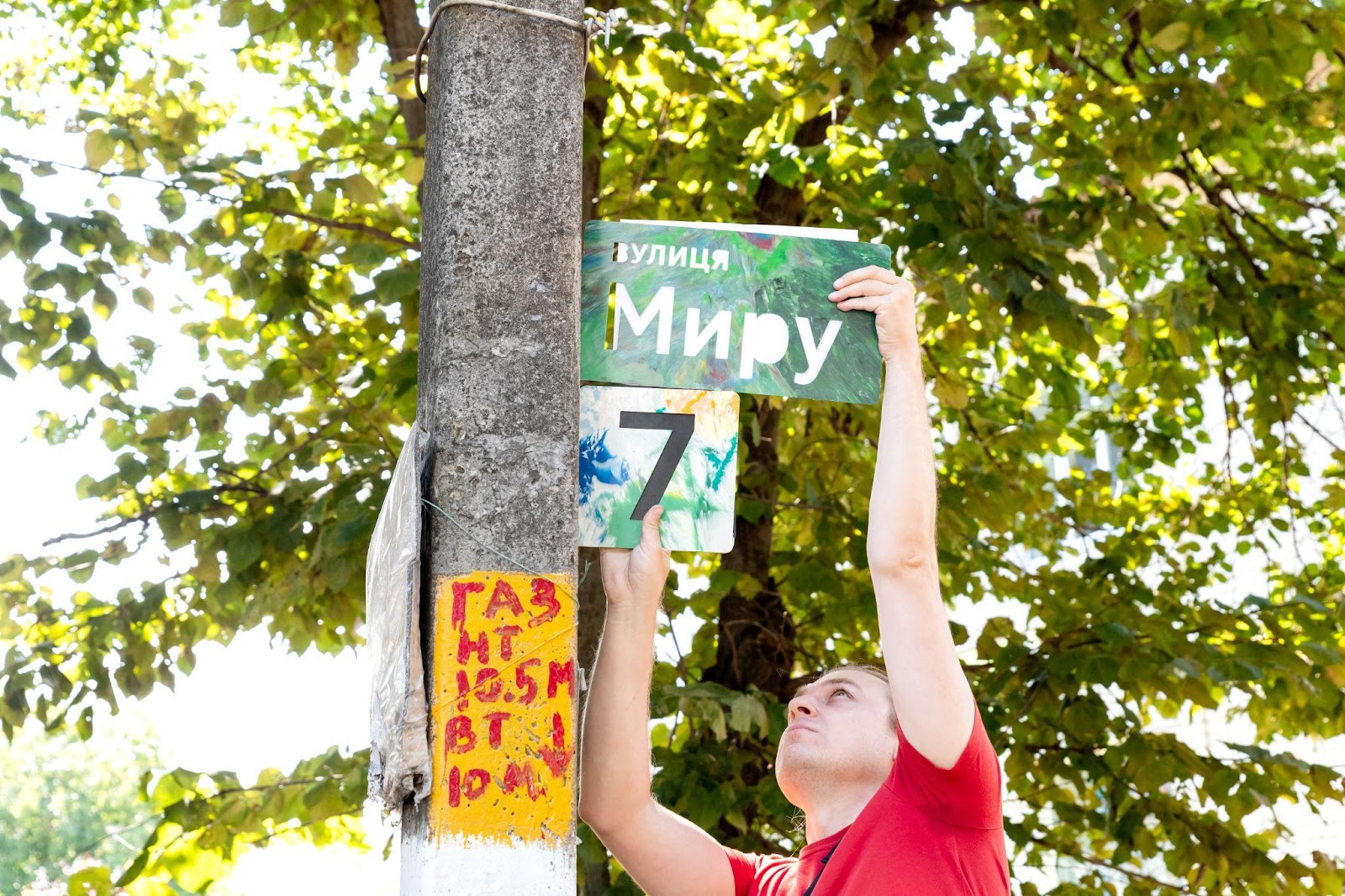
Determining the future location of pointersThe primary training was conducted online, but towards the end of the summer, Oleksandr Kolodko personally met with the students in Kulykivka. After all, all proposed solutions should be tested in a real-life setting, preferably with user input. During the meeting, Oleksandr emphasized the importance of carefully considering the location of signs, particularly at intersections. This is where people typically look to determine their next direction, making signs at crossroads significantly beneficial.
Working in the area helped schoolchildren to gain a better understanding of:
- Whether or not the new signs will be noticeable on buildings with natural lighting.
- How trees and bushes may affect their visibility.
- The distance from which the signs can be seen while driving and the clarity of the text.
Design of signs
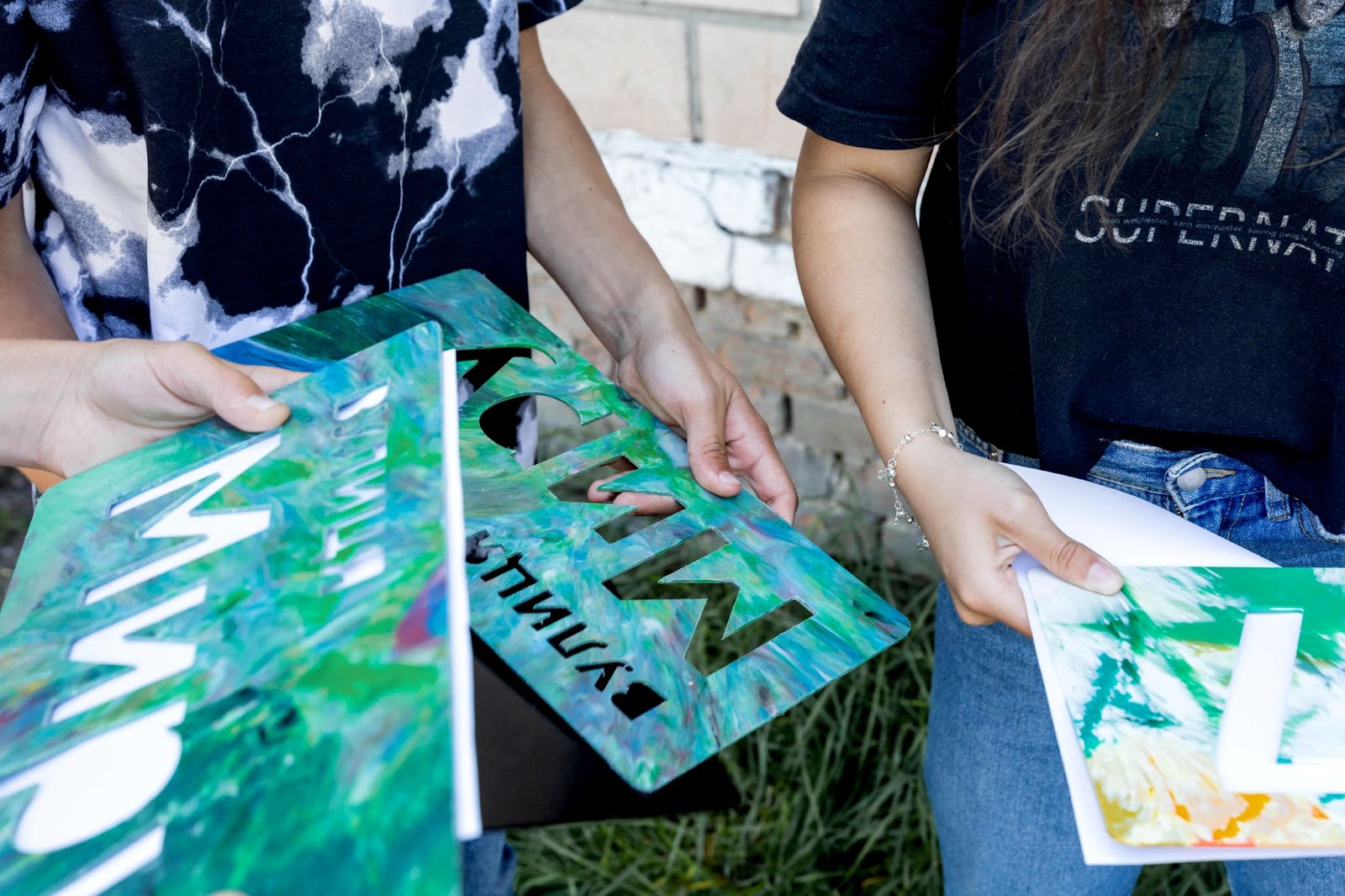
All the signs in Kulykivka are going to look like this soon
Initially, the children wanted to use yellow to make the signs stand out from a distance. However, they learned that there weren't many yellow caps available and that not all types of plastic can be recycled. Thus, they had to come up with a different color mix. Other important considerations included securely attaching the signs and ensuring they were easily visible.
"Making signs is no simple task; it takes money, time, and skilled hands. For each street, one must carefully select where to place the signs to ensure they are visible to both pedestrians and drivers," remarks tenth-grader Victoria Bushko.
"It's not just about the colors, but also the font of the signs that is crucial. This allows people to easily locate and remember important places like the hospital, stadium, or post office. It turns out that different fonts may be needed for different needs," adds another project participant, Sofiia Nykonenko.
It was through practice that all of these discoveries were made. Only when the children used their own test signs and "tried" them on the building could they assess their vision and make conclusions for future work visually.
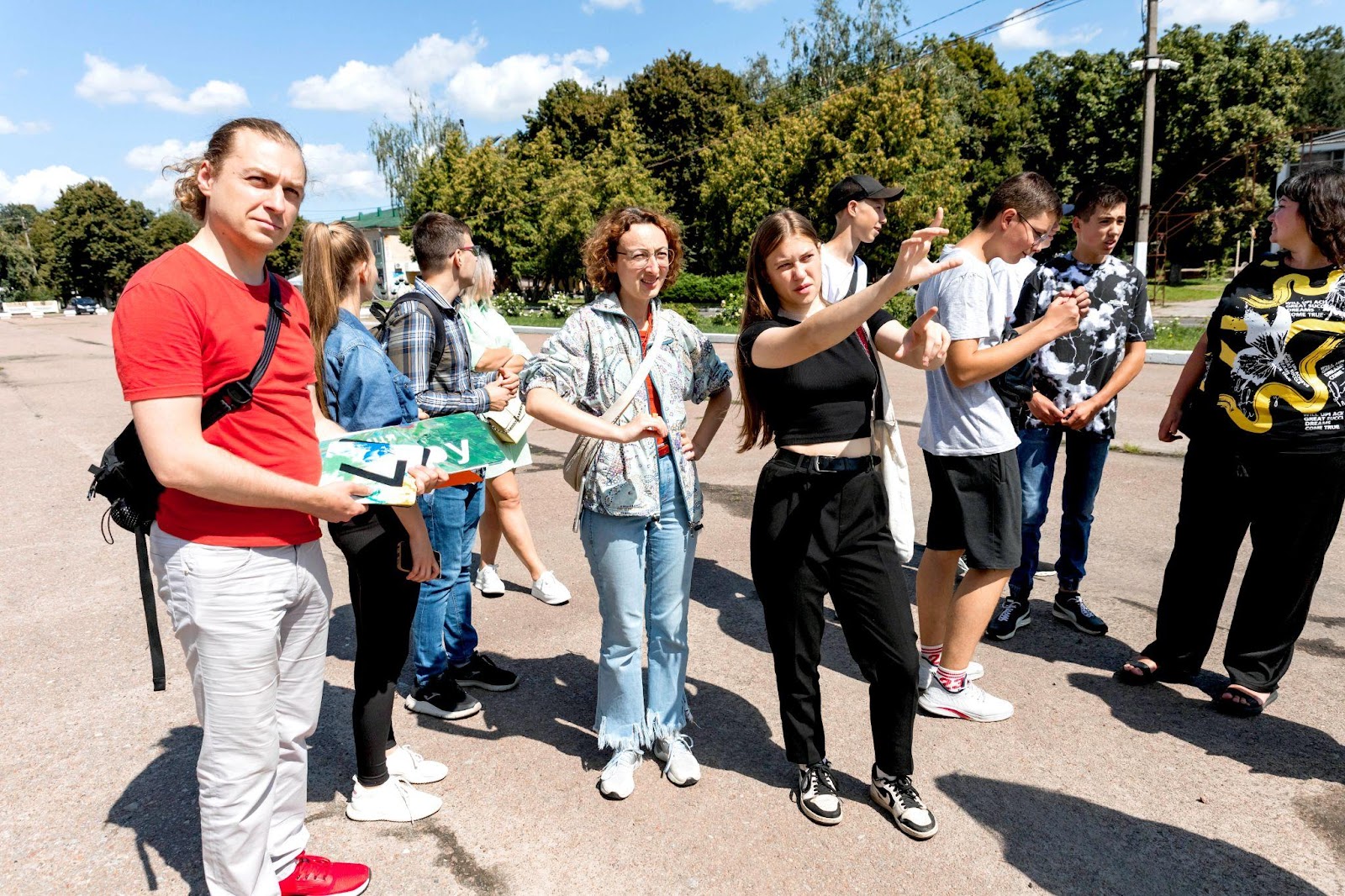
Oleksandr Kolodko and the team from KulykivkaHowever, Oleksandr Kolodko, the designer and mentor of the teenagers, also had something to learn from them.
"Children don't have the same professional biases and can offer unique perspectives on projects (sometimes very unexpected, which only makes it better). Their lack of experience means they don't have preconceived obstacles like adults do. So when adults say something is difficult or impossible, children are more likely to ask "Why?" and their curiosity can often lead to exciting and unexpected solutions. It may turn out that it is true, and why not? " Oleksandr Kolodko says.
Cap to cap
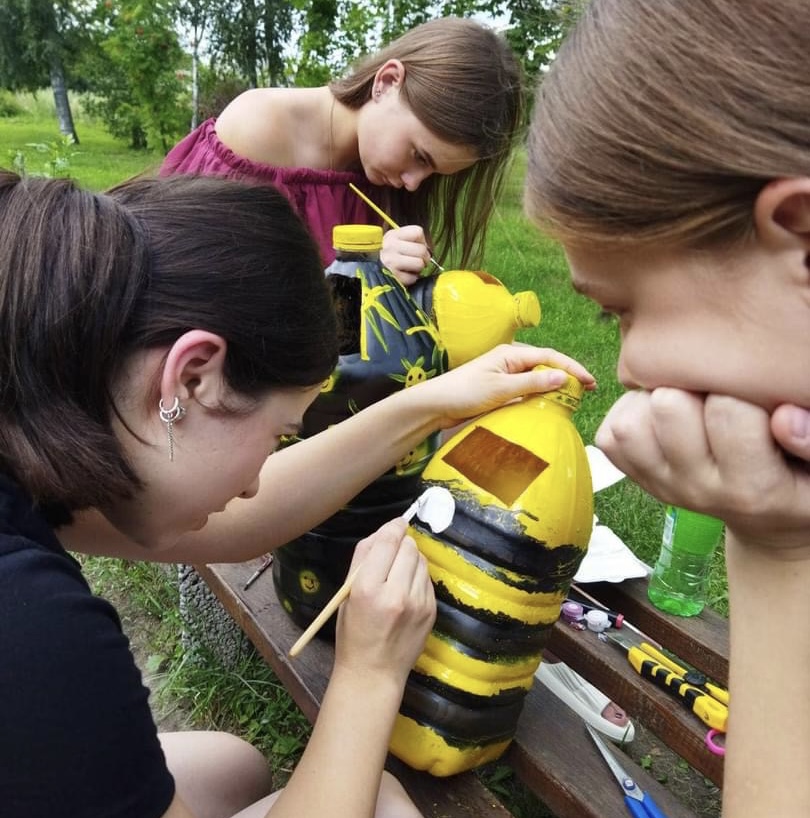
The process of making containers to collect plastic caps
In the Kulykivka community, garbage sorting has been taking place since 2018; there are already containers for plastic and glass in the settlements. But to collect caps for the project, the children created separate containers – five-liter water bottles. To attract attention, schoolchildren painted them in "bee colors."
"We met up to discuss certain details, moments, and painted containers for bottle caps. We also drew different and adorable faces on them. It was a lot of fun, and most importantly, we were feeling pretty high," remembers Kateryna Bohdan, a tenth grader.
In Kulykivka, various unique containers were placed all around for collecting caps. They strategically chose busy areas such as near stores, in the central park, by the lake, and adjacent to a few cafes. Additionally, brief explanations were attached to the containers, informing people about the project's goal. The entire village came together to participate in collecting lids.
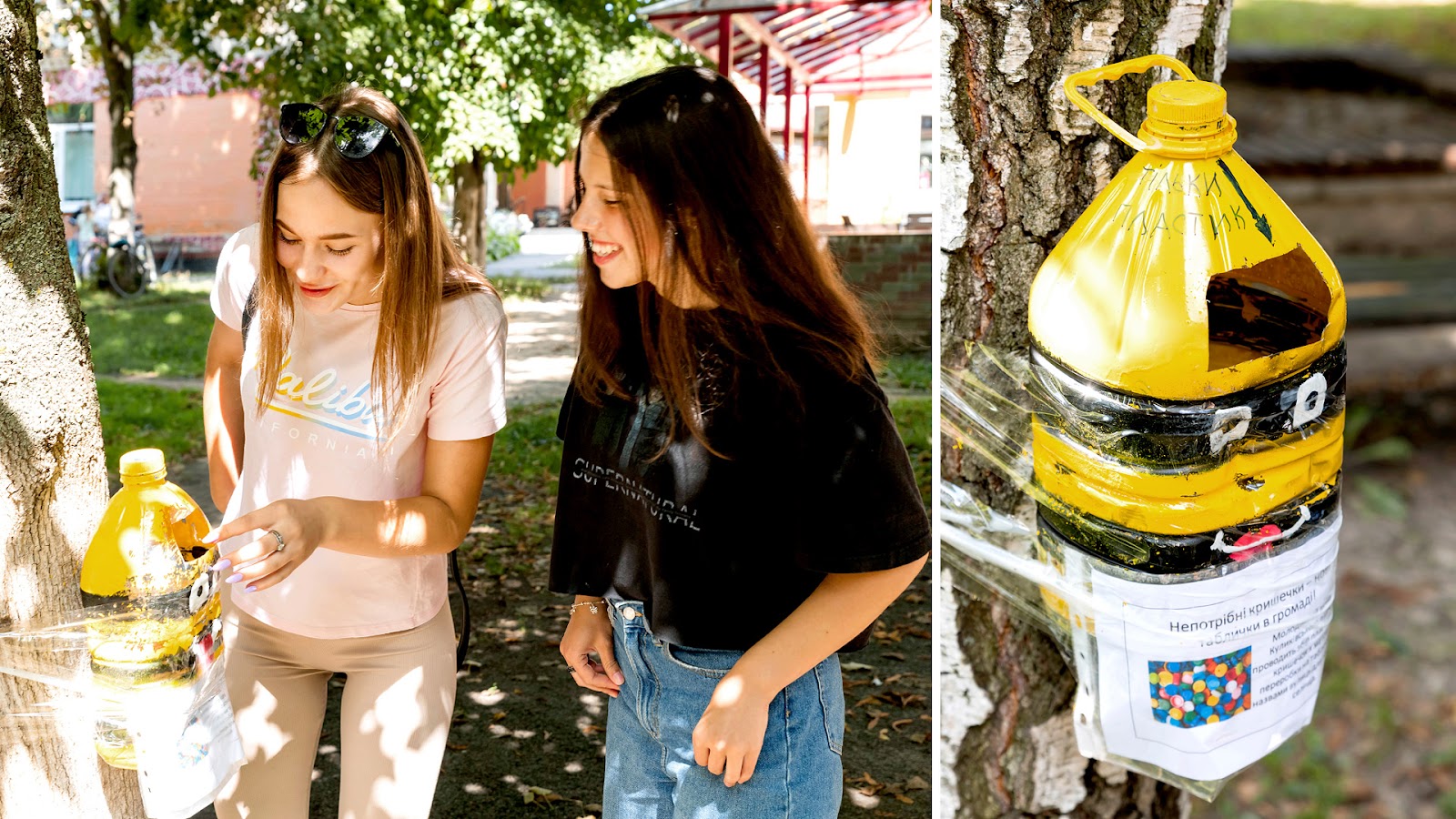
All the residents of the community were invited to collect the caps.
"When collecting materials, we discovered that not all caps can be recycled. My family and I learned caps labeled with 2 or 02 cannot be thrown in the garbage. This has stuck with us and become a lifelong habit. Whenever I finish a drink with a plastic cap, I always check for the numbers 2 or 02, and if I find them, I make sure to put it in a separate container for sorting. These simple actions have become second nature to me," shares 10th-grader Sofiia Nykonenko.
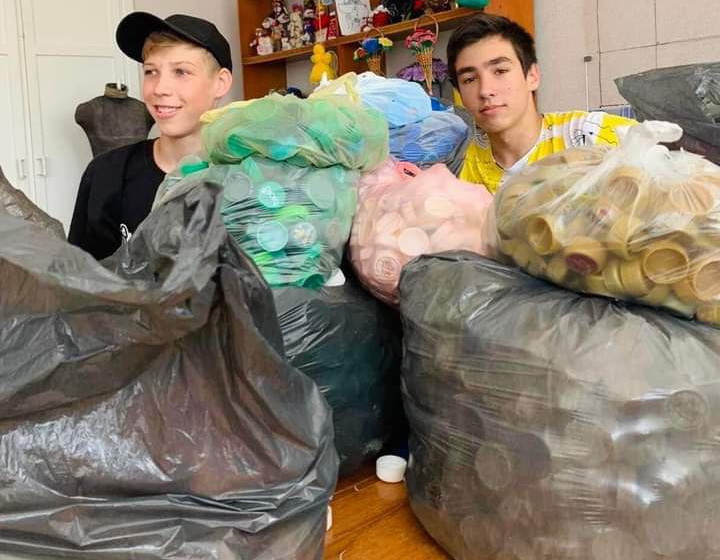
The caps collected during the project will be sent for recycling.
During the summer season, a total of over 30 kilograms of plastic bottle caps were successfully collected, a quantity sufficient to produce 96 street signs. Moreover, the students have committed to collaborating with the non-governmental organization "Eco Misto," which possesses a press capable of transforming the gathered plastic material into functional signs.
Did they really succeed?
The teenagers initiated a project on "Spilnokosht" to raise funds for the required equipment for producing plates, specifically a milling machine. This CNC milling machine will be utilized to apply street names onto the plates, effectively transforming them into functional signposts.
The Kulykivka Lyceum students' initiative to raise funds for community navigation was a success on the Big Idea platform, with a total of UAH 65,555 collected. 120 supporters generously contributed to this cause, enabling the schoolchildren to show their appreciation by sending them handmade chocolate sets created by one of the project participants, student Anton Salo.
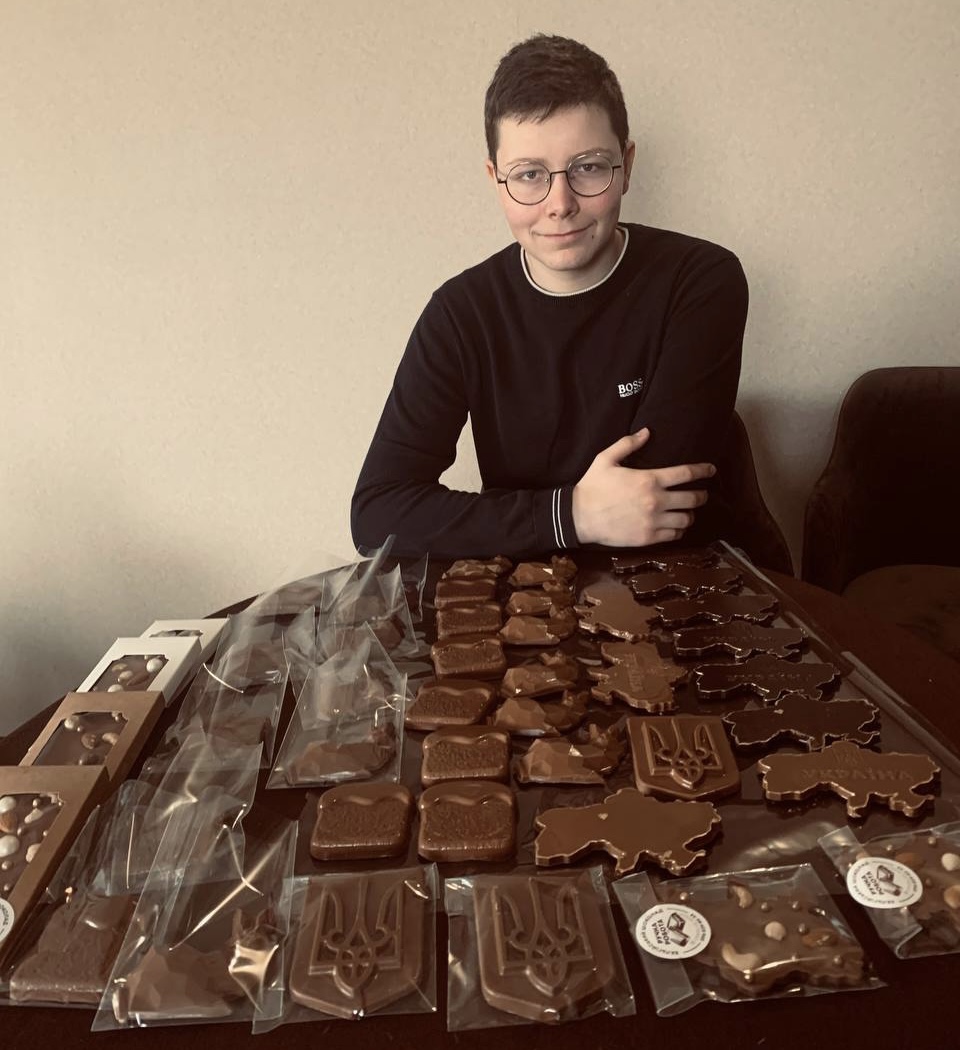
Anton Salo and the chocolate he made
The schoolchildren had already arranged to acquire a milling machine to create the first 50 plates for the new street signs using recycled plastic. They plan to install them on Kulykivka's main street before the new year and then gradually place them on other streets in the village. Interestingly, they intend to utilize the machine for more than just making plates. With its arrival, the teenagers aim to establish a STEM laboratory at school. Additionally, the lyceum students hope the machine will help them generate significant funds for the Armed Forces. Since the start of the war, they have been hosting charity fairs using scraps, and the milling machine will enable them to broaden significantly their selection of products as it can cut not just plastic but also wood and metal.
"Who would've thought us, as schoolchildren, would be entrusted to update navigation in Kulykivka? And that, due to our hard work, a modern milling machine would be acquired for our school? We couldn't have achieved this milestone on our own. We were fortunate to work alongside a skilled and dedicated team. We are grateful to "Plan. DIY" for their belief in us and for sharing their knowledge, skills, and confidence," Anton Salo remarked.
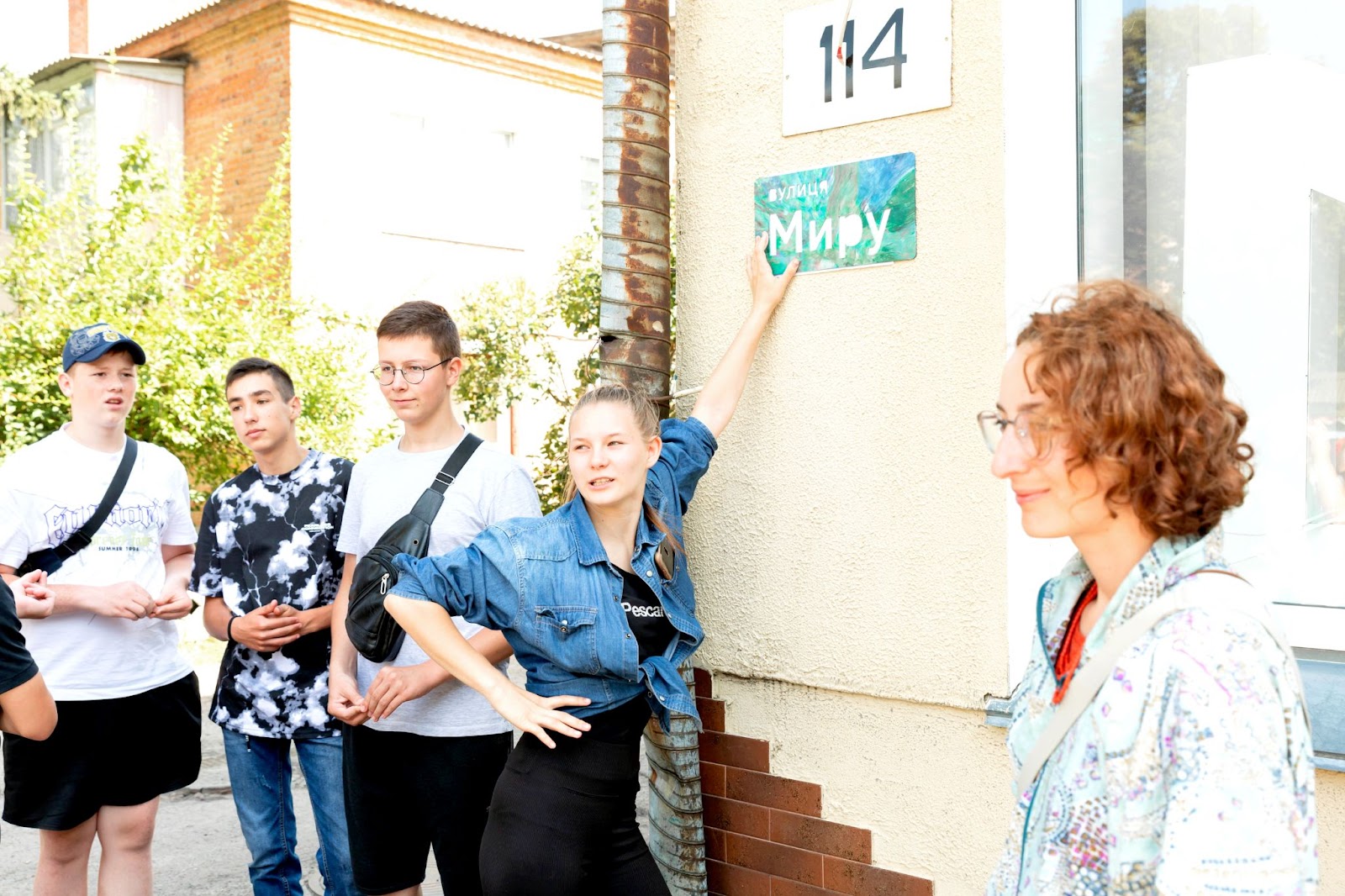
"Trying on" plates
Yaryna Dymytryshyna, a Ukrainian language and literature teacher at Kulykivka Lyceum and curator of the project, shares the same opinion.
"The program provided precious training for us. The project involved many experts who worked with teenagers, not just anyone, but the crème de la crème. We are proud to have had the opportunity to work with such a talented team; their guidance and teachings were invaluable. Through this experience, we have all formed strong bonds," the teacher comments.
According to Yaryna Dymytryshyna, teachers were drawn to this program because it allows young people to gain hands-on experience rebuilding a country amid war.
"We're observing the rebuilding of previously occupied communities in the Chernihiv region, and we can see that our idea will benefit others, too. We believe it's important to incorporate modern solutions into the reconstruction process immediately. In the post-war era, when the war ends, there will be much work for all of us. As educators, it's our duty to support our students' initiatives and assist them in any way possible," Yaryna Dymytryshyn says.
Even more helpful solutions!
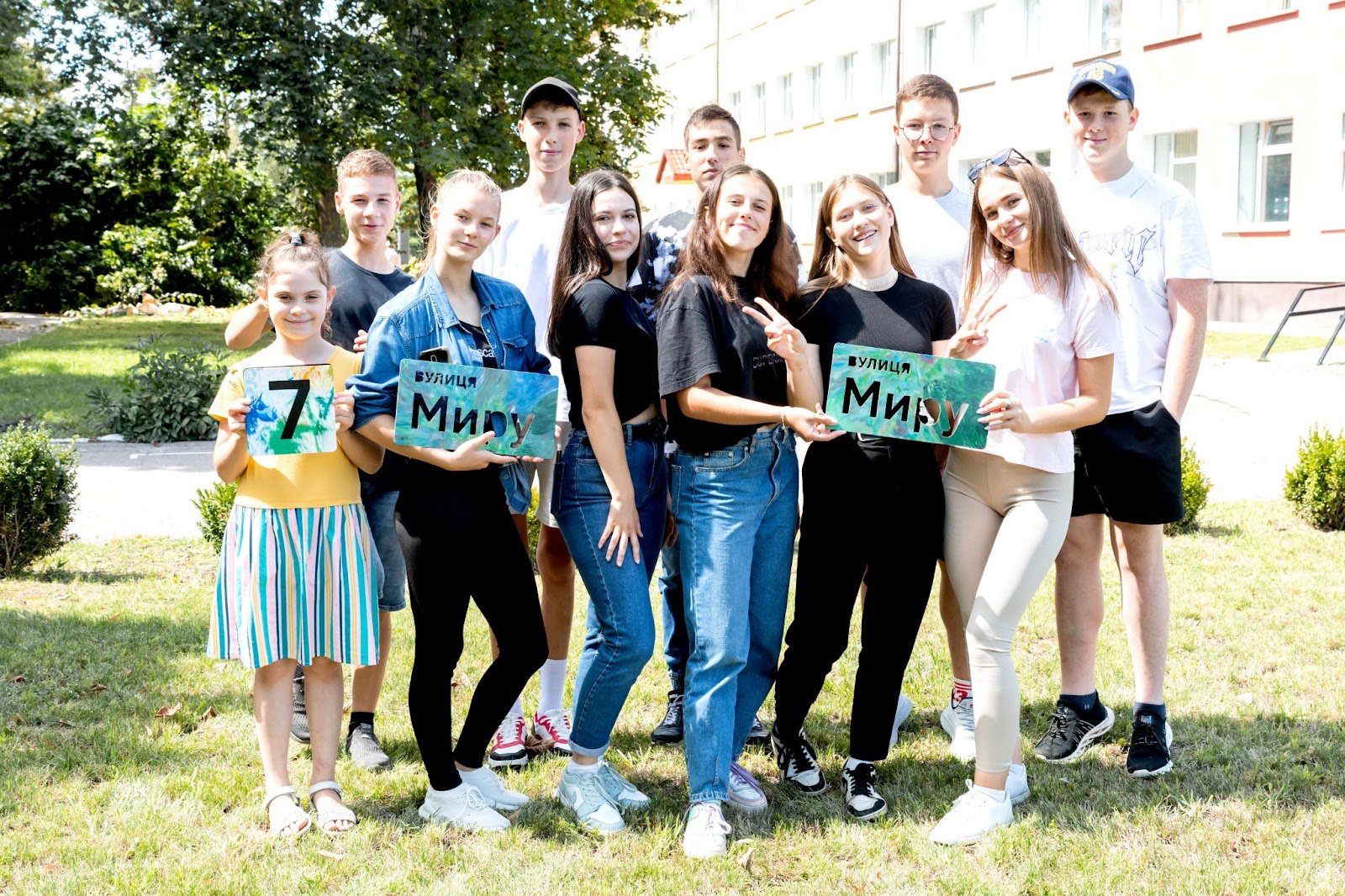
The team from Kulykivka
Students from the Kulykivka Lyceum express that the project focusing on navigation in their hometown has given all involved "a sense of heartfelt emotions, combined with a sense of obligation and excitement." From conducting interviews to creating initial models of signs, learning about plastic and its handling, and collaborating with skilled individuals from the "Plan. DIY" team, this experience has been both eye-opening and memorable, leaving a lasting impact on their lives.
"The project has brought together the school, students, and teachers, and I believe it has also united the entire community. Being involved in the project has been a great motivation to strive for improvement; each step is crucial. It's like taking a deep breath and finding the strength to keep moving forward," stated Victoria Bushko, a participant in the project.
Sofiia Nykonenko, a 10th grader, was able to decide her future career through her involvement in the project:
"I've explored and learned many new things in the past six months. One of the things I discovered was how to create signs and develop community navigation strategies. I also gained knowledge on selecting colors and fonts and how to combine them to make eye-catching and well-designed signage. It was so enjoyable that I am now considering pursuing design studies after graduation," the girl shares.
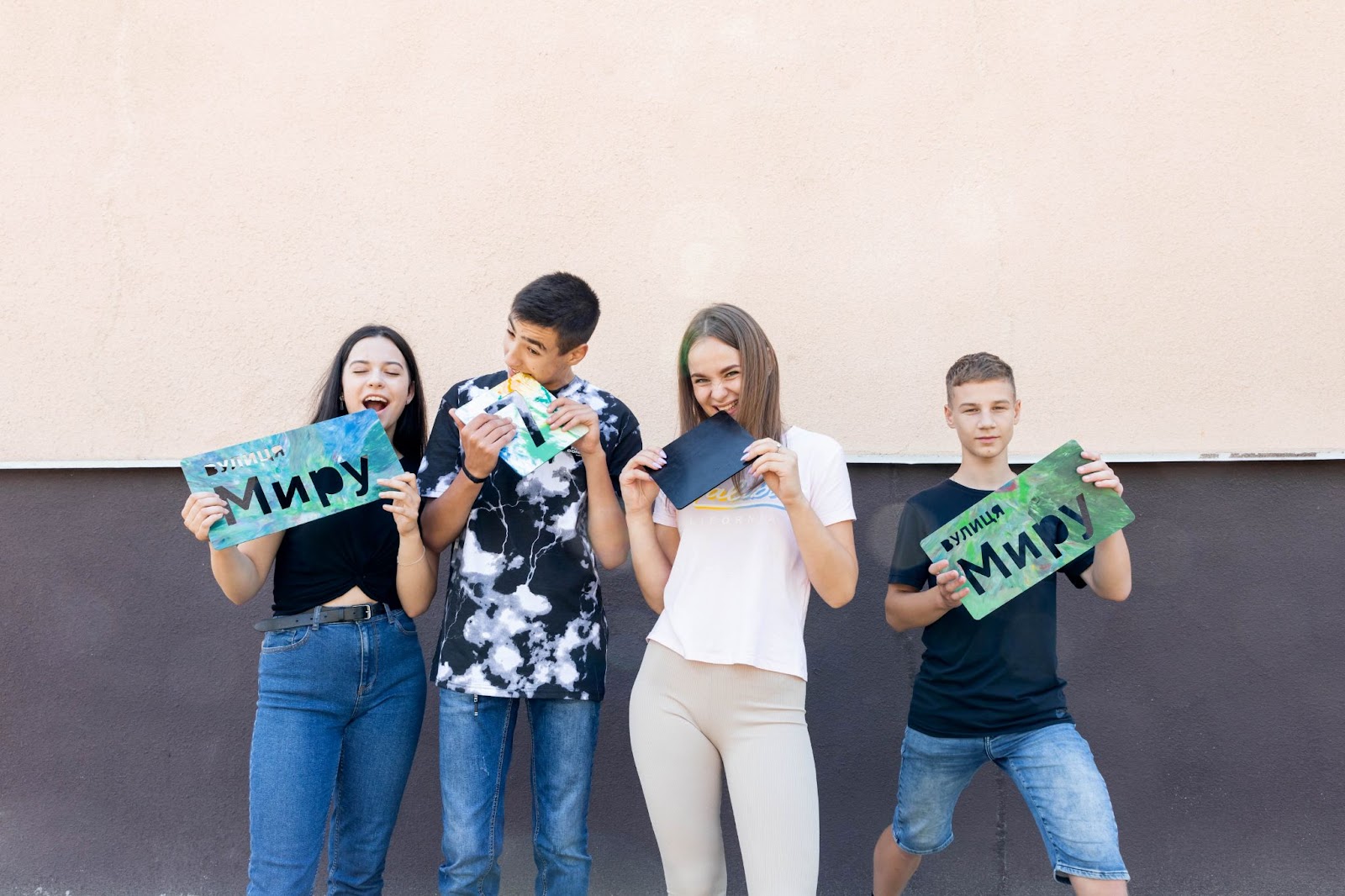
The schoolchildren acquired new knowledge throughout the project and shared numerous positive experiences
While participating in the project, 10th-grade student Kateryna Bohdan felt greater fulfillment, confidence, and responsibility for her tasks. She also developed stronger communication skills and a more genuine approach to interacting with others. This experience has also heightened her awareness and commitment to adequately sorting garbage, and she now encourages her family to do the same.
"It's important for people to recognize the impact of garbage and environmental pollution on our health and the planet's health. I'm impressed with how well our townspeople handle this issue; they were highly engaged in our project and contributed through donations," Kateryna Bohdan mentioned. "I believe all of us must raise awareness about the importance of environmental protection. We should reach out to the community and involve everyone in securing a clean future for the next generations. For instance, by properly sorting our garbage, minimizing the use of non-recyclable materials, and instilling discipline in ourselves and others to prevent littering."
As the schoolgirl said, young people need to be active and serve as role models. It is the responsibility of adults to support and assist children, which applies to all community members, too.
"We need to join forces, and then things will fall into place for us, regardless of what solutions we come up with for our communities. As students, if we set the example and demonstrate how our solutions truly benefit the environment, I believe those around us will understand the importance and necessity of implementing them in every community. Plus, it's so exciting to be a part of this!" says Kateryna.
Teenagers are confident that this environmental project not only serves a practical purpose but also brings joy to those who are currently fighting. Upon returning to their village, they will witness the beauty and convenience of Kulykivka.
"Despite the Russian's fury and their attempts to attack us with missiles, my team and I will continue to sort through the rubbish and seek solutions to implement our project," remarks Anton Salo, a member of the school team. "And once our soldiers return home, they will be welcomed with a new navigation system, one of which will bear the message: 'Thanks to the Armed Forces.'"


